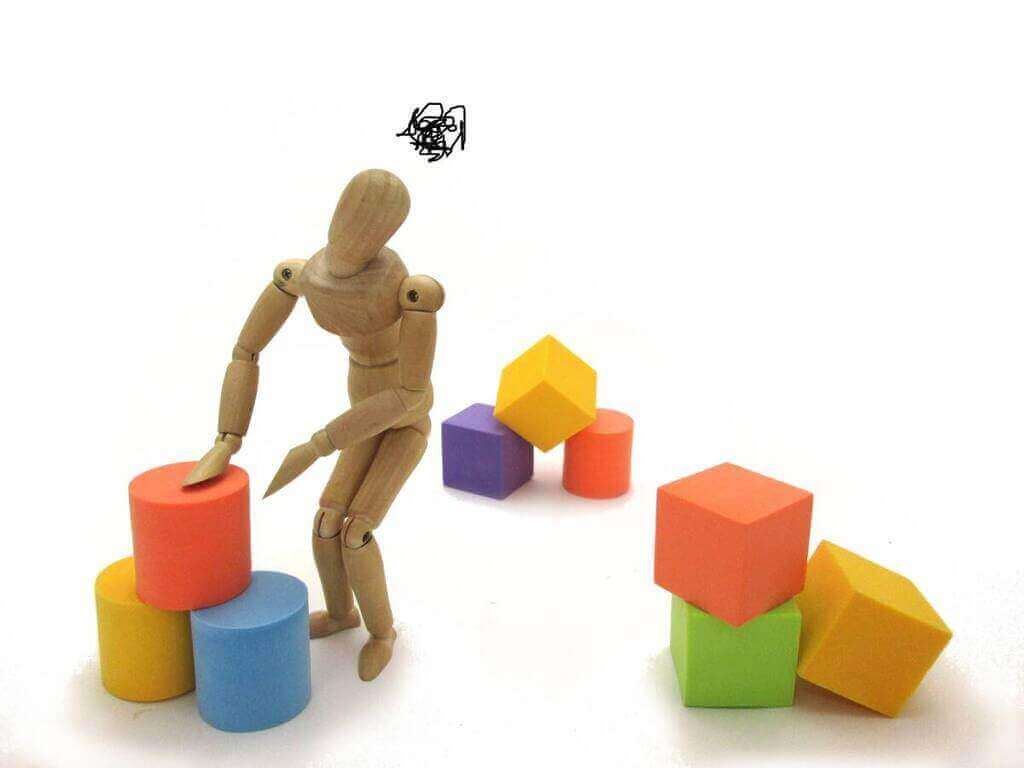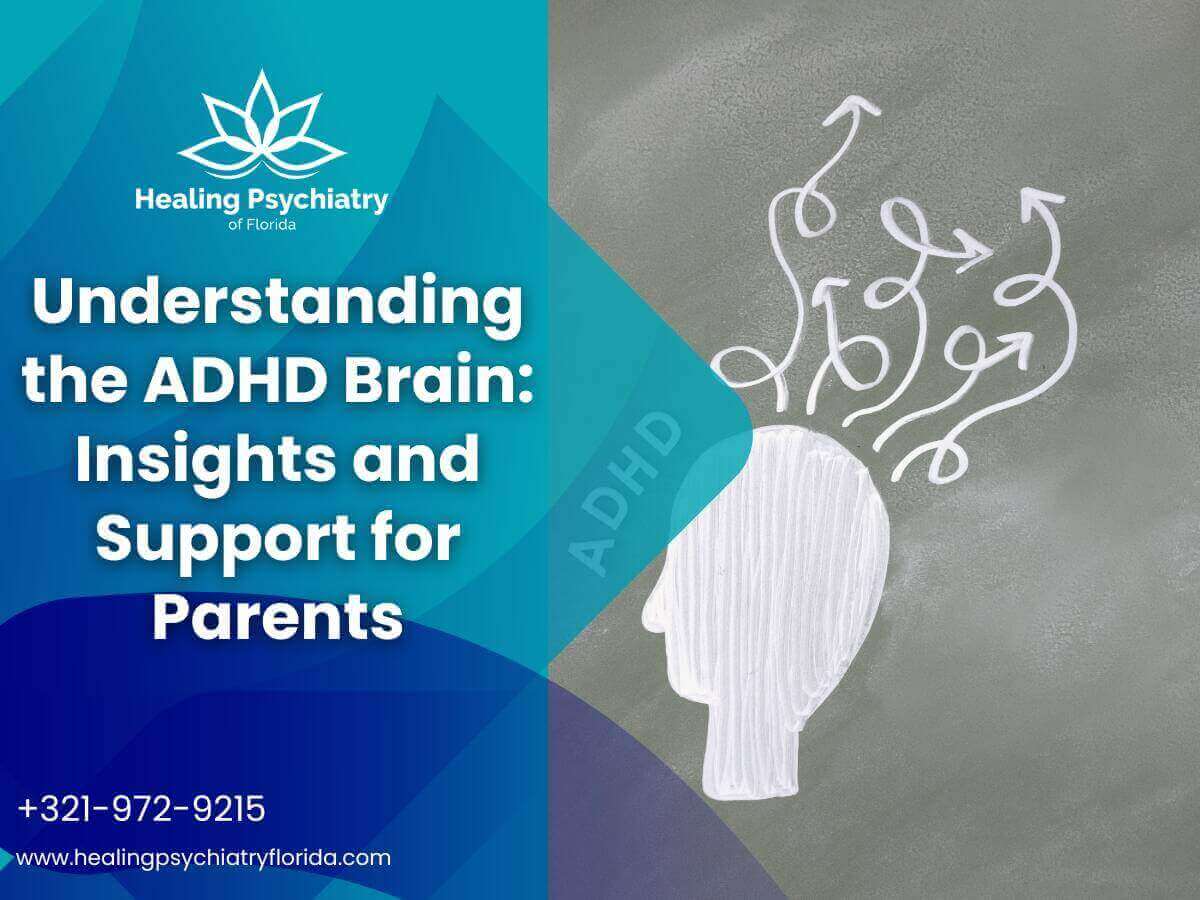It can be tough when your child is always on the go, finding it hard to concentrate on their schoolwork. Many parents face the struggle of calming down their kids, but for some, this high energy and lack of focus could be a sign of something more serious. It might be Attention Deficit Hyperactivity Disorder (ADHD), a condition that impacts around 6.1 million children in America.
ADHD is often misunderstood, leading to frustration for both parents and children. The ADHD brain works differently. This affects behavior, learning, and social skills. Knowing these differences will help you support your loved one’s needs and potential.
This blog will explore how an ADHD brain differs from others. It will highlight structural, functional, and neurochemical variations. We’ll also emphasize that with the right support and resources, success is still very much within reach for children with ADHD. For further guidance, consider exploring our educational programs and support groups.

What is ADHD?
ADHD, or Attention Deficit Hyperactivity Disorder, is a condition characterized by persistent patterns of inattention, hyperactivity, and impulsivity. Children with ADHD may find it hard to:
- Sit still
- Follow instructions
- Concentrate on tasks
Diagnosing ADHD requires a thorough evaluation by a healthcare professional. It often includes behavioral tests and feedback from teachers and parents. Let’s take a look at some of these main differences:
Structural Differences in the ADHD Brain
People with ADHD have differences in the size and volume of certain brain structures. For instance, the prefrontal cortex, responsible for planning and impulse control, is often smaller. The basal ganglia controls movement and executive functions. They also have structural differences. Research shows that these variations play a role in the symptoms of ADHD. A study in The Lancet Psychiatry emphasizes these structural differences and their impact on ADHD symptoms.
- Prefrontal Cortex
- Cause: Smaller size in individuals with ADHD
- Effect: It is harder to plan and control impulses
- Basal Ganglia
- Cause: Differences in structure
- Effect: Trouble with movement and executive functions
- Overall Impact
- Cause: Brain structure variations
- Effect: Struggles with planning and impulse control
Functional Differences in the ADHD Brain
The ADHD brain doesn’t just look different; it works differently, too. Brain activity and connectivity, especially in the prefrontal cortex, are reduced. The default mode network, responsible for mind-wandering and daydreaming, shows altered connectivity. Research in the National Library of Medicine shows functional differences. It helps us understand why sustained attention tasks are tough for those with ADHD.
- Brain Activity
- Cause: Lower activity in the prefrontal cortex
- Effect: Planning and impulse control issues
- Connectivity
- Cause: Changes in the default mode network
- Effect: More mind-wandering and daydreaming
- Attention Challenges
- Cause: Functional brain differences
- Effect: Difficulty staying focused
Neurochemical Differences in the ADHD Brain
ADHD causes inattention, impulsivity, and hyperactivity. This is due to low levels of neurotransmitters like dopamine and norepinephrine. This neurological basis affects the brain’s motor-regulatory systems. It impacts both subcortical and frontal regions. There’s no single neurobiological marker for ADHD. So, effective diagnosis and treatment require thorough behavioral tests. They also need a mix of medical and behavioral treatments. You can read more on the neurobiological basis of ADHD here: School Psychology Review.
- Neurotransmitters
- Cause: Low dopamine and norepinephrine levels
- Effect: Problems with attention, motivation, and rewards
- Motor-Regulatory Systems
- Cause: Impacts on subcortical and frontal brain areas
- Effect: Issues with movement and executive functions
- Diagnosis and Treatment
- Cause: No single marker for ADHD
- Effect: Need for thorough behavioral tests and a mix of treatments

Cognitive and Behavioral Differences
These structural, functional, and neurochemical differences impact daily life. Executive functions like planning, impulse control, and working memory are often impaired. Attention regulation and hyperactivity can make classroom settings and social interactions challenging. The Child Mind Institute says a child with ADHD might struggle to follow multi-step instructions. This can frustrate both the child and their caregivers.
- Executive Functions
- Cause: Brain differences affect planning and impulse control
- Effect: Challenges with planning, impulse control, and working memory
- Attention Regulation
- Cause: Functional and chemical brain differences
- Effect: Difficulty focusing and controlling hyperactivity
- Daily Life Impact
- Cause: Combined brain differences
- Effect: Trouble with instructions and social interactions
Strengths and Success Stories
Despite the obstacles, individuals with ADHD have great strengths. They are very creative and good at solving problems. These strengths can be used for incredible success. Read inspiring stories of successful people with ADHD. Be reassured that ADHD is manageable, unlocking unlimited potential.
Strengths Often Found in Individuals with ADHD
- Creativity
- Thomas Edison, a brilliant inventor, showed traits that suggest ADHD. His endless curiosity and bold ideas led to inventions like the light bulb and the phonograph. They showed his exceptional problem-solving skills.
- Problem-Solving Skills
- Ingvar Kamprad, the creator of IKEA, faced challenges with ADHD and dyslexia. His ADHD helped him develop creative problem-solving skills. He transformed the furniture sector by introducing flat-pack furniture. It simplified the transportation and assembly of products.
- Hyperfocus
- Michael Phelps, the most decorated Olympian, used his ADHD to excel in swimming. His intense concentration during training and competition was a major factor in his unmatched success in the sport.
- Resilience
- Will Smith, a successful actor and musician, has shared his personal struggles with ADHD. His “will” and grit have helped him face challenges. They led to a great career in entertainment.
- Energy and Enthusiasm
- Richard Branson, founder of the Virgin Group, has ADHD. He believes his energy and enthusiasm, due to his ADHD, helped him start and run many successful businesses in various industries.
Examples of Successful People with ADHD
- Entrepreneurs
- David Neeleman, the founder of JetBlue Airways, has ADHD. He believes his ADHD has been an asset. It gave him the creativity and risk-taking abilities to succeed in the competitive airline industry. Neeleman once said, “My ADHD gave me a high level of creativity and the ability to take risks. It’s part of who I am and has contributed to my success”.
- Artists
- Justin Timberlake, a globally recognized musician and actor, has ADHD. His creative talents and dynamic performances have earned him numerous awards and accolades. Timberlake once said, “I have OCD mixed with ADHD. Try living with that.”
- Scientists
- Dr. Edward Hallowell, a psychiatrist and ADHD specialist, has ADHD himself. He has written many books on the condition and uses his personal experience to help others manage their ADHD. Dr. Hallowell’s groundbreaking work in ADHD has changed views on the disorder. It has also given hope to many.
Reassurance: ADHD Can Be Managed
Managing ADHD effectively is necessary and achievable with the right strategies and support. Here are some key points:
- Professional Support
- Seeking help from healthcare professionals will help individuals with ADHD. Those at Healing Psychiatry of Florida offer support through their ADHD therapy. Giving them the tools to manage their condition.
- Medication and Therapy
- Many people with ADHD benefit from a combination of medication and behavioral therapy. Studies show that these treatments boost focus and reduce symptoms.
- Organizational Tools
- Planners, reminders, and apps help people with ADHD. They are able to manage their tasks better. Here are some digital apps and tools for personal organization. They can help people with ADHD manage daily tasks more efficiently:
- Todoist: Todoist is a powerful task manager and to-do list app that helps you keep track of tasks, set deadlines, and organize projects with ease.
- Link: Todoist
- Trello: Trello uses boards, lists, and cards to help you organize tasks and projects visually. It’s great for managing personal tasks and team projects.
- Link: Trello
- Evernote: Evernote is a note-taking app that allows you to capture ideas, create to-do lists, and save articles and images. It helps keep all your notes organized in one place.
- Link: Evernote
- Google Keep: A note-taking and task management app. It works well with other Google services. It allows you to create and share notes, lists, and reminders.
- Link: Google Keep
- Microsoft OneNote: OneNote is a digital notebook that allows you to organize notes, tasks, and to-do lists. It integrates with other Microsoft Office products and is great for both personal and professional use.
- Link: Microsoft OneNote
- Todoist: Todoist is a powerful task manager and to-do list app that helps you keep track of tasks, set deadlines, and organize projects with ease.
- Planners, reminders, and apps help people with ADHD. They are able to manage their tasks better. Here are some digital apps and tools for personal organization. They can help people with ADHD manage daily tasks more efficiently:
- Support Networks
- A support network of family, friends, and professionals is importantl. It provides vital encouragement and help. Here are two support networks for individuals with ADHD:
- CHADD (Children and Adults with Attention-Deficit/Hyperactivity Disorder)
- CHADD provides support, education, and advocacy for individuals with ADHD. They offer local chapters, online communities, and a wealth of resources for both children and adults.
- Link: CHADD
- ADDA (Attention Deficit Disorder Association)
- ADDA focuses on providing resources and support specifically for adults with ADHD. They offer webinars, virtual support groups, and a variety of resources tailored to adult experiences with ADHD.
- Link: ADDA
- CHADD (Children and Adults with Attention-Deficit/Hyperactivity Disorder)
- A support network of family, friends, and professionals is importantl. It provides vital encouragement and help. Here are two support networks for individuals with ADHD:
These organizations help people with ADHD and their families. They provide resources and support to manage symptoms and thrive in life and work.
ADHD doesn’t have to limit anyone’s potential. With the right approach, people with ADHD can use their strengths and succeed.
Supporting Someone with ADHD
If you suspect your child has ADHD, there are practical steps you can take to support them. Creating a structured environment, using positive reinforcement, and establishing routines are beneficial. Professional help, including therapy and medication, plays an important role. Having professional ADHD testing done is advisable. Healing Psychiatry of Florida specializes in administering these specific tests.
Conclusion
The ADHD brain is different. It has unique structural, functional, and neurochemical traits. However, these differences don’t limit one’s potential for success. With the right support and resources, individuals with ADHD thrive. If you have concerns about ADHD, seek help. Try Healing Psychiatry of Florida.
For more info and resources or to schedule a consultation, contact Healing Psychiatry of Florida. Explore our educational programs and join support groups to stay informed and connected. Together, we can navigate the challenges and embrace the joys of life with ADHD.
References:
Data and Statistics on ADHD
https://www.cdc.gov/adhd/data/CDC_AAref_Val=https://www.cdc.gov/ncbddd/adhd/data.html
Treatments for ADHD in Children and Adolescents: A Systematic Review

